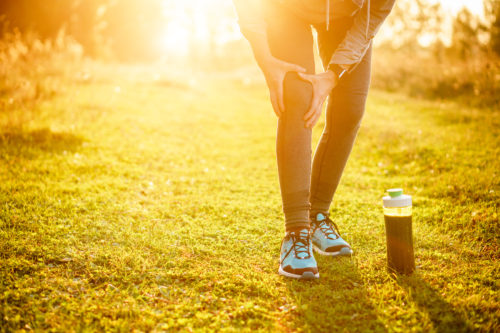What is the Iliotibial Band (ITB)?
It is a thick band of fascia (connective tissue) that runs from the outside of the hip down to the outside of the knee. The main function of the IT band is to stabilize the knee.
What is Iliotibial Band Syndrome (ITB Syndrome)?
ITB syndrome is usually described as lateral (outer) knee pain. It is an overuse injury caused by repetitive motions, such as running. Therefore, it is commonly referred to as “runner’s knee.” The ITB can become irritated from rubbing against the bone on the outside of your knee or by compressing the tissues beneath it, causing inflammation. In other words, repetitive bending and extending of the knee is responsible in some way.
Although ITB syndrome is also called “runner’s knee,” anyone can develop it. It is very common amongst cyclists, skiers, hikers, and soccer players.
What are the causes of ITB Syndrome?
It is often times either a hip problem or a foot problem, and not the actual knee. Strengthening your hip and strengthening your intrinsic foot muscles can help.
-Weakness in your hip abductors and external rotators, such as the gluteus medius, can potentially lead to ITB syndrome. The tensor fasciae latae (TFL) muscle will have to compensate for the weakness and that puts even more strain on the ITB. That’s why it is important to build strong glutes!
-We are in shoes all day and rely on them for support. So, we end up losing the ability to use the little muscles in our feet. How well can you move your toes and feet? Do you spend time barefoot? Can you balance on one leg? We need to activate and wake up our feet! If our feet do not function the way they should, we can be compensating somewhere else.
Another important reason you may develop ITB syndrome is that you don’t have a solid foundation to move from – your inner core (transverse abdominus), pelvic floor, and diaphragm help stabilize. Addressing the foundation will also make all the other exercises more effective as well. Remember, you need to build a strong foundation first.
How do you fix it?
To start, RICE (rest, ice, compression, and elevation)! You want to limit the activities that bring on your pain. Stop irritating it! Icing and taking pain/anti-inflammatory meds can help as well.
It might also be beneficial to get a gait/running analysis from a professional to see if it is your running mechanics that is contributing to the issue.
ITB syndrome may also be a sign to change your training routine. Take time warming up before your run and increase your mileage gradually. Run on even surfaces and replace your running shoes regularly.
Most importantly, keeping up with strength training is crucial! It is an essential tool when trying to prevent injuries. Watch the video below for some staple exercises.
Disclaimer: Remember, every body is different and there is no “one size fits all” program. These are just some exercises that helped our patients with ITB syndrome.
Exercises demonstrated in the video:
1. bridges
2. clamshells
3. sidelying hip abduction
4. short foot
5. single leg deadlifts
Items mentioned in the video:
Disclosure: Amazon links are affiliate links. As an Amazon Associate we earn a small commission if you purchase the item through our link, at no additional cost to you. Please see our full disclosure to learn more. Thank you for your support!


This is a great resource! It’s also nice to see some prevention tips and cross training!
So glad you think so! Thanks for the feedback 🙂
Very insightful post thanks for sharing
Thank you! Glad you liked it 🙂